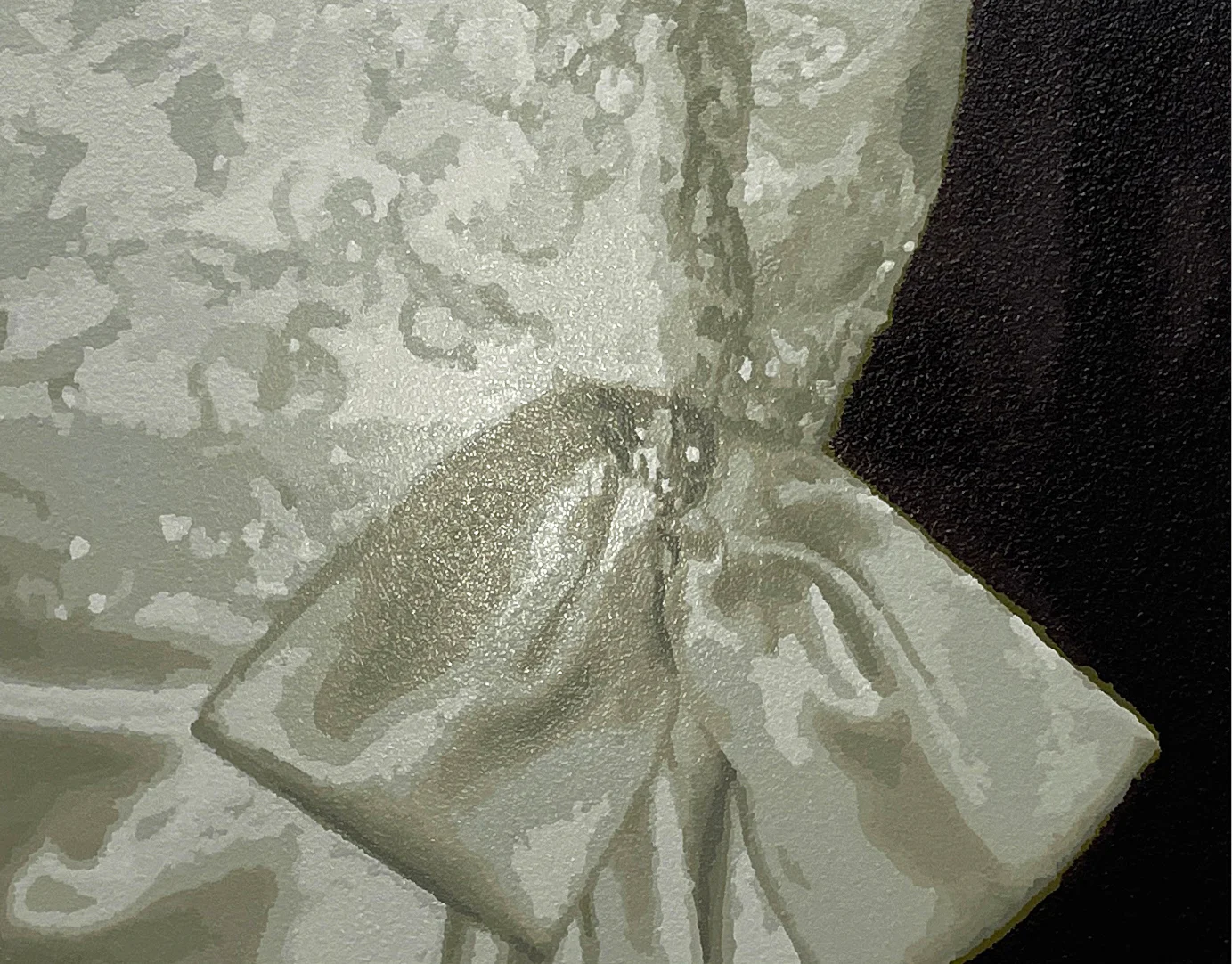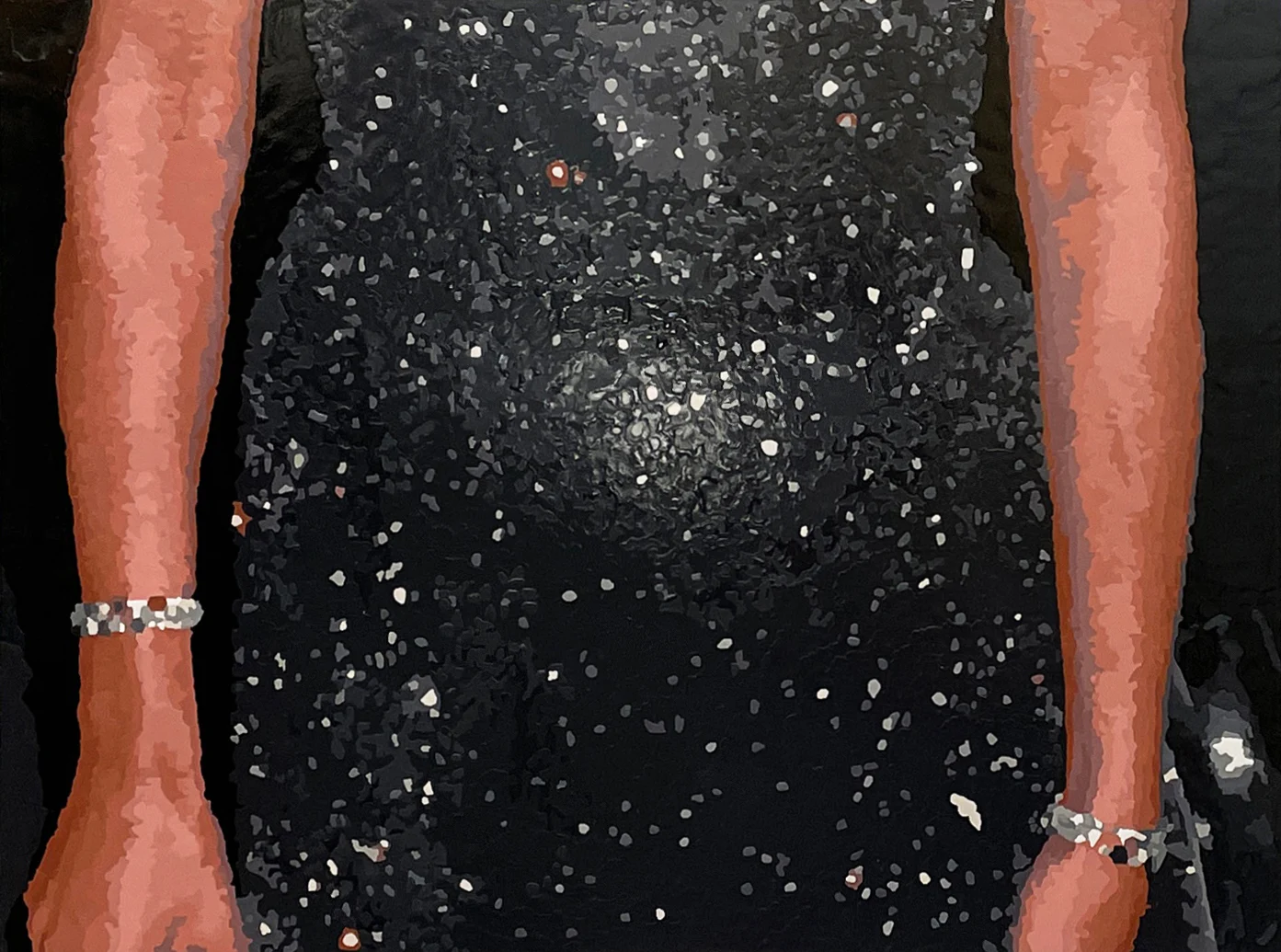
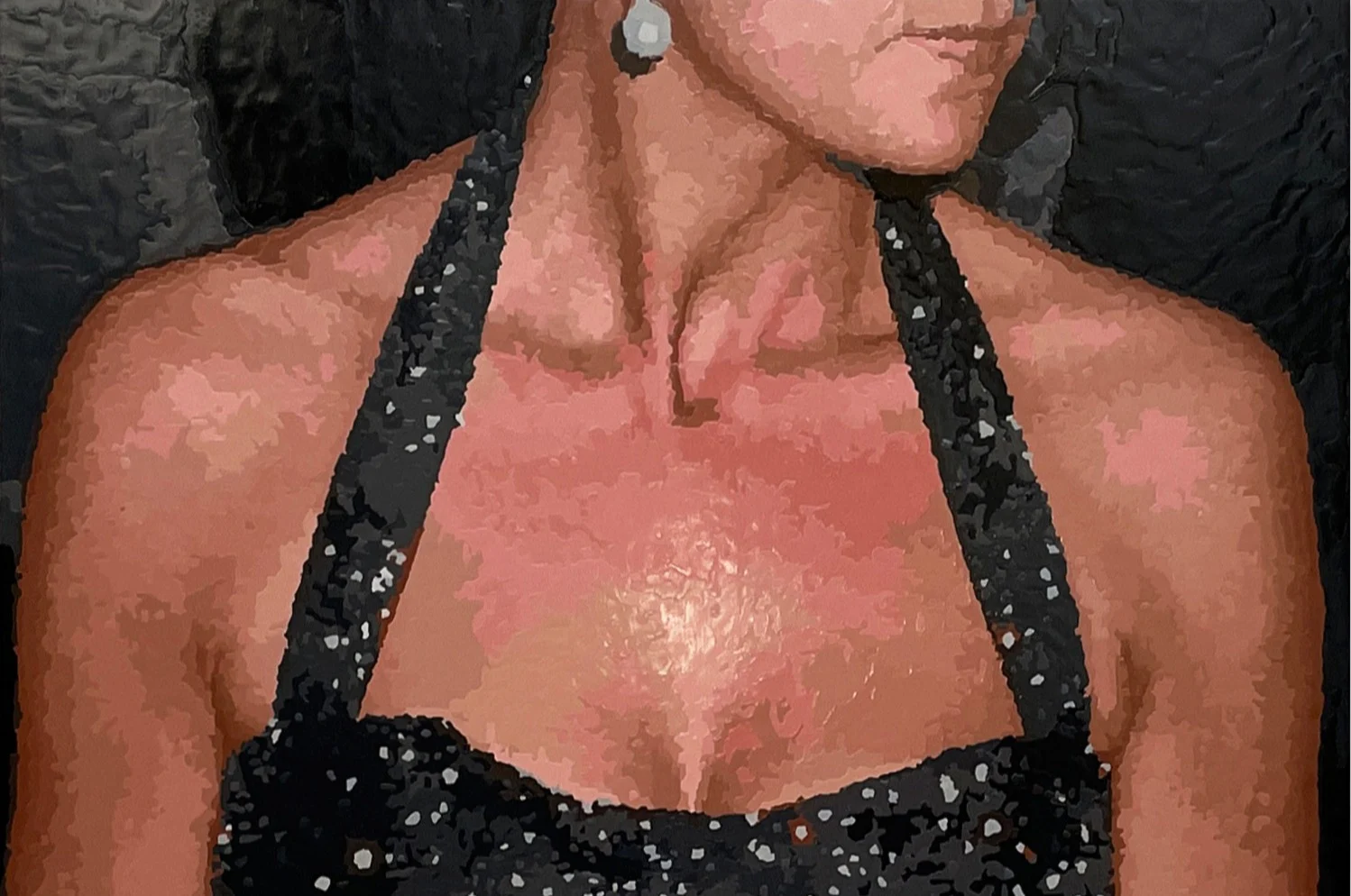
We’re all aware of the power of the tabloids. Bright cameras flashing at a celeb, a headline the next morning focused on the priceless items being worn. It’s pure opulence, pure excess, and Caroline Zurmely loves it. Her nail polish artworks depict small, abstracted slices of these celebrity moments. She tells writer Emma Firth about her love of the golden age of tabloid photography in the 1990s, and her desire to show a different perspective on it with her unique approach to art.
Elvis Presley once said that “The image is one thing and the human being is another,” and he had a point. People are more than the sum of their pixelated selves. That said, how many times have you looked at a picture, perhaps of yourself, years later and you see—feel—something that wasn’t there before? A playfulness, a sorrow, or sense of style that, unbeknownst to you at the time, wordlessly scripted what was inside your head. You see pictures, like people, also have a life of their own. They are never just static timestamps, they’re messier than that, they transform. Meanings mature over time. The clue is in the word itself, seeing. It’s a fluid, ever-evolving and entirely subjective, motion.
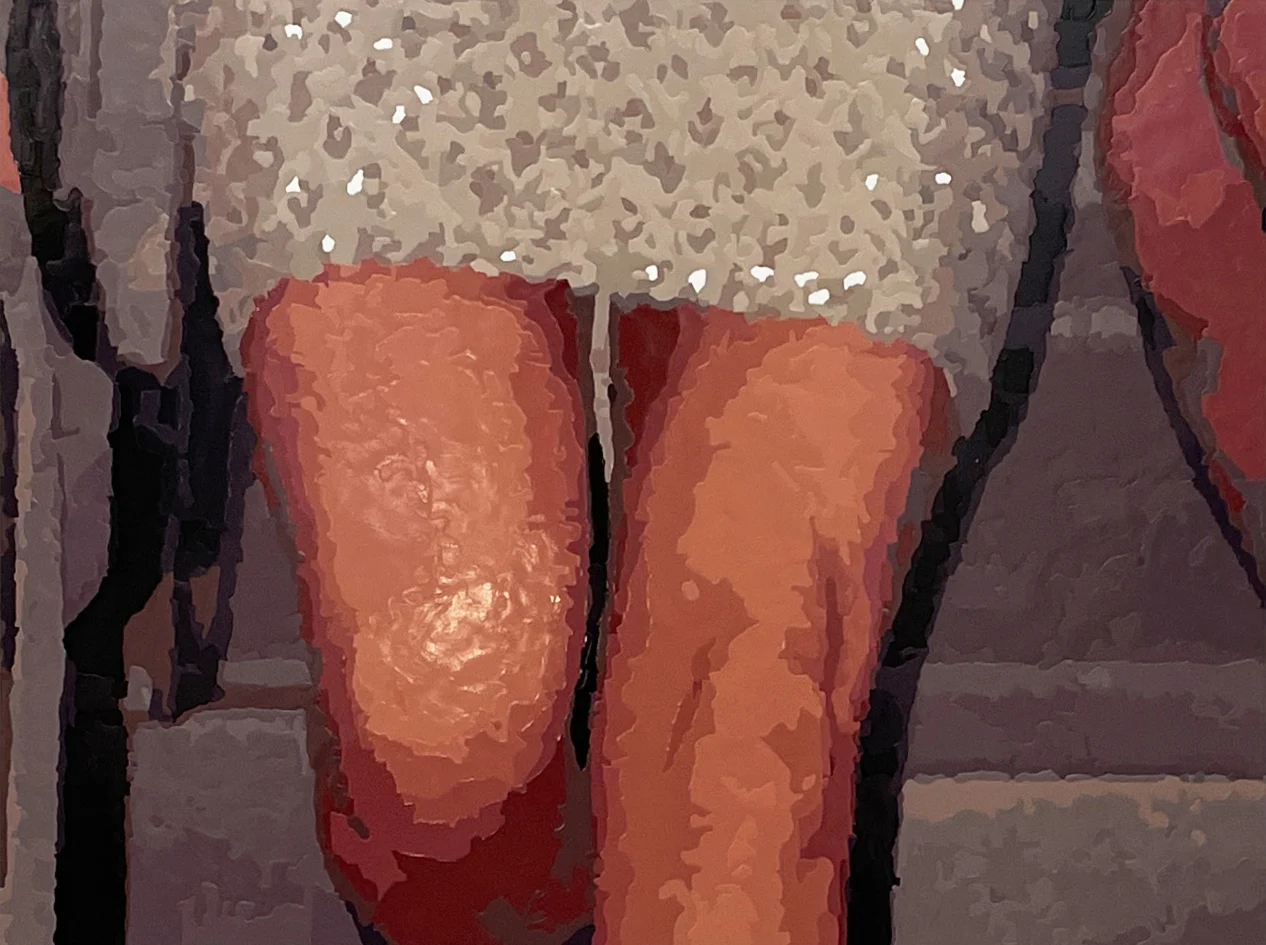
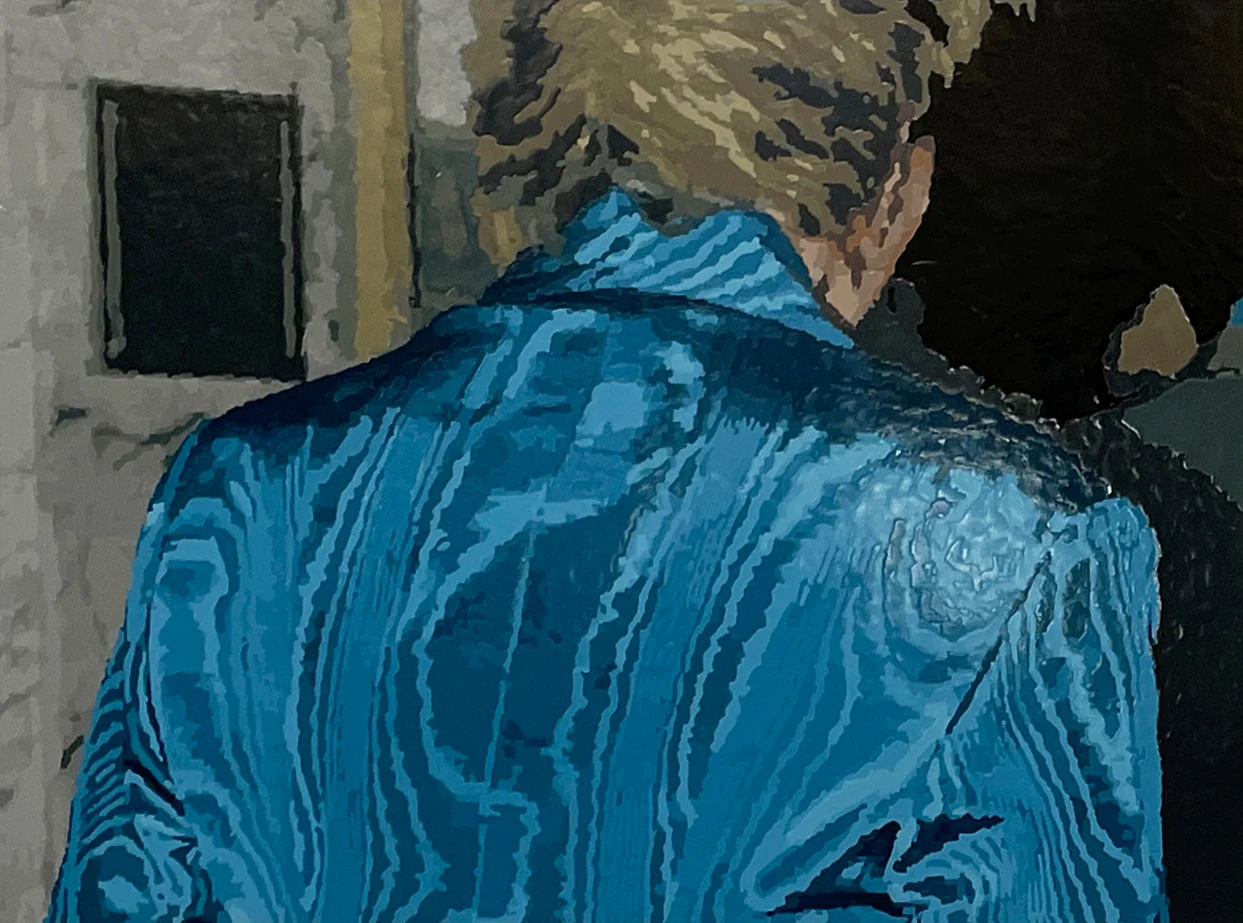
Caroline Zurmely’s nail-varnish paintings play with this art of perception. Her tightly cropped images, depicting scenes from the 1990s and early noughties tabloid press, disrupt the lens, forcing the viewer to experience a photograph—often widely shared and decades old—from a different vantage point.
“I’ve always been interested in taking an image out of the context it originally existed…abstracting it,” she explains. “I really like looking at photos from that period. That was the era of tabloid photography. You don’t really have it today. They’re a little blurry and grainy because they’re older, but I love that.


The Dallas-based creative describes her work as “guilty pleasure art.” “When you depict something, it’s like you get a little piece of it maybe,” Zurmely ponders. “I might not own any of these luxury items and you might not see me portray myself that way but it’s just satisfying…I’m just fascinated by this lifestyle that I won’t have. Like, no one will, right?” On closer inspection, the items themselves—a Chanel handbag, say, or Princess Diana’s sapphire blue engagement ring—are fiercely emblematic of a glossy exterior world. A gilded circle that celebrated high society and inaccessible opulence and a specific kind of conservatism that penetrated popular culture, printed and fed to us by magazines to be reconstructed in the eyes of the beholder.
This habitual indulgence, of which many of us are collectively “guilty” of and take pleasure in consuming, is not unlike scrolling through the looking glass of social media. These pictures, this influx of information, of strangers and celebrities we will likely never meet, have the power to make us spiral into a panic of wanting. Of course, it’s futile to measure one’s worth in relation to someone else’s curated storyboard of selfhood. In many ways, Zurmely draws us into a more liminal space that celebrates both the grit and the glamor. “My paintings are very shiny but when you get up close to them they’re a little bit gnarly,” she says. “Sometimes the texture is not perfect, sometimes there are bubbles.” It pays to remind ourselves every now and again of the imperfection that pervades every person’s life, regardless of where one resides on the status ladder, even when we’re staring at the “perfection” of these luxury, celebrity moments . There is always more going on, more layers, than what is viewed in the first instance.

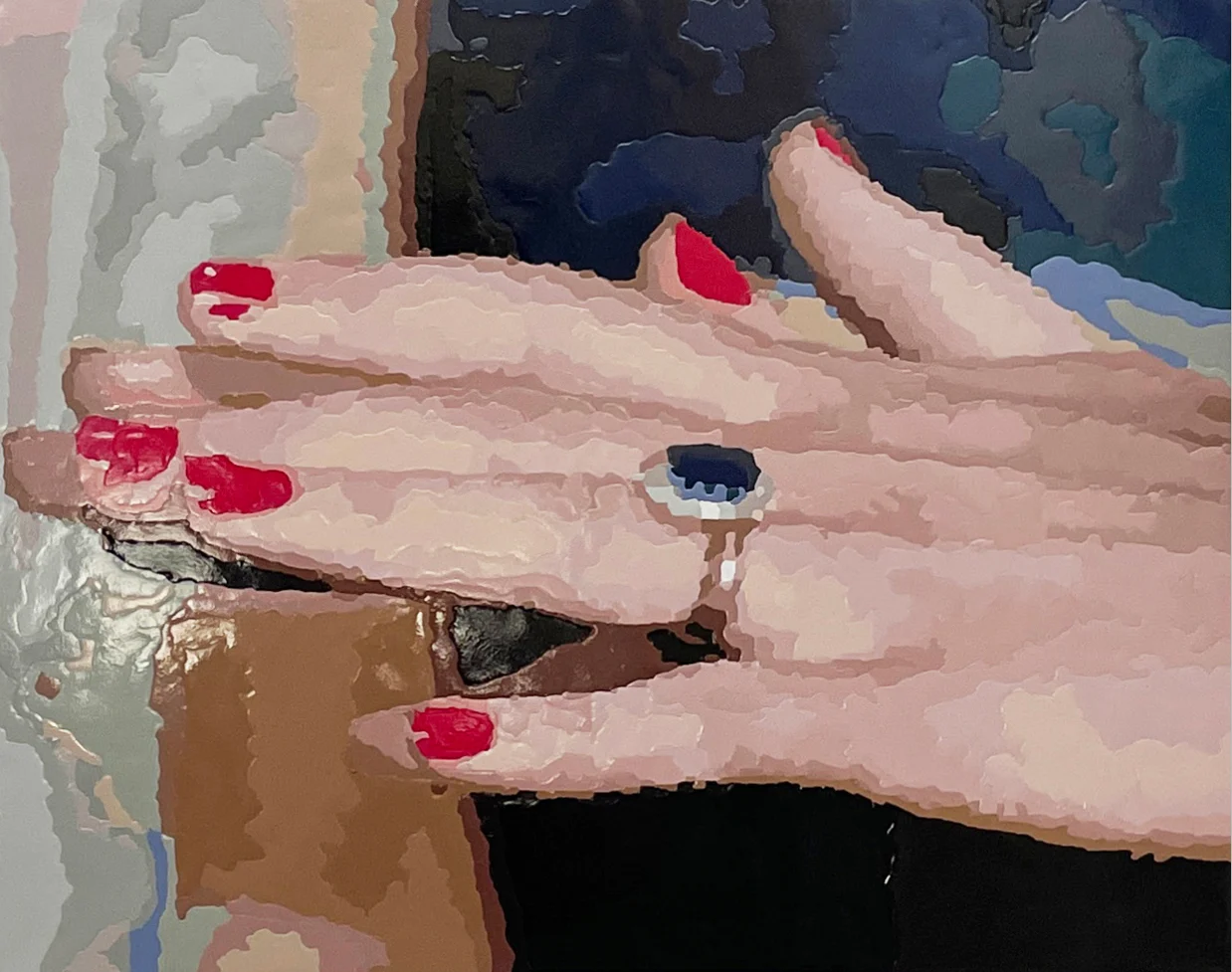
Concealment is doubtlessly important to Caroline. Subjects’ identities, while some might be recognisable, are largely obscured—zooming in instead on a hand, ankles, or a bare clavicle. “I don’t want to exploit anything,” she says. Even the medium itself: nail polish. It’s a lacquer as much about coating what lies beneath as it is decorative embellishment and visibility. “It’s a barrier,” she says. “I can literally spray my paintings down with windex and it would be fine. They are protected.”
“I hated painting in oil and acrylic, I just found it so restrictive. I love people who can do it [her grandfather was an oil painter] and I appreciate it so much, but I would start crying in 15 minutes.” With nail polish, however, it doesn’t need to be perfect “because you’re using it in a way that’s already wrong.” A peek inside her intimate studio booth showcases kaleidoscopic shelves lined with polishes, over 400, spilling over into boxes underneath her desk “There’s this element of collecting I love,” she says. “I feel like I can find anything on the internet, so that phase satisfies so many different aspects of my personality.” Growing up, she would play with varnishes and dress them up like dolls with scrunchies in her bathtub. Each one had their own personality. “I feel like I’m living out my childhood fantasy in a way.”
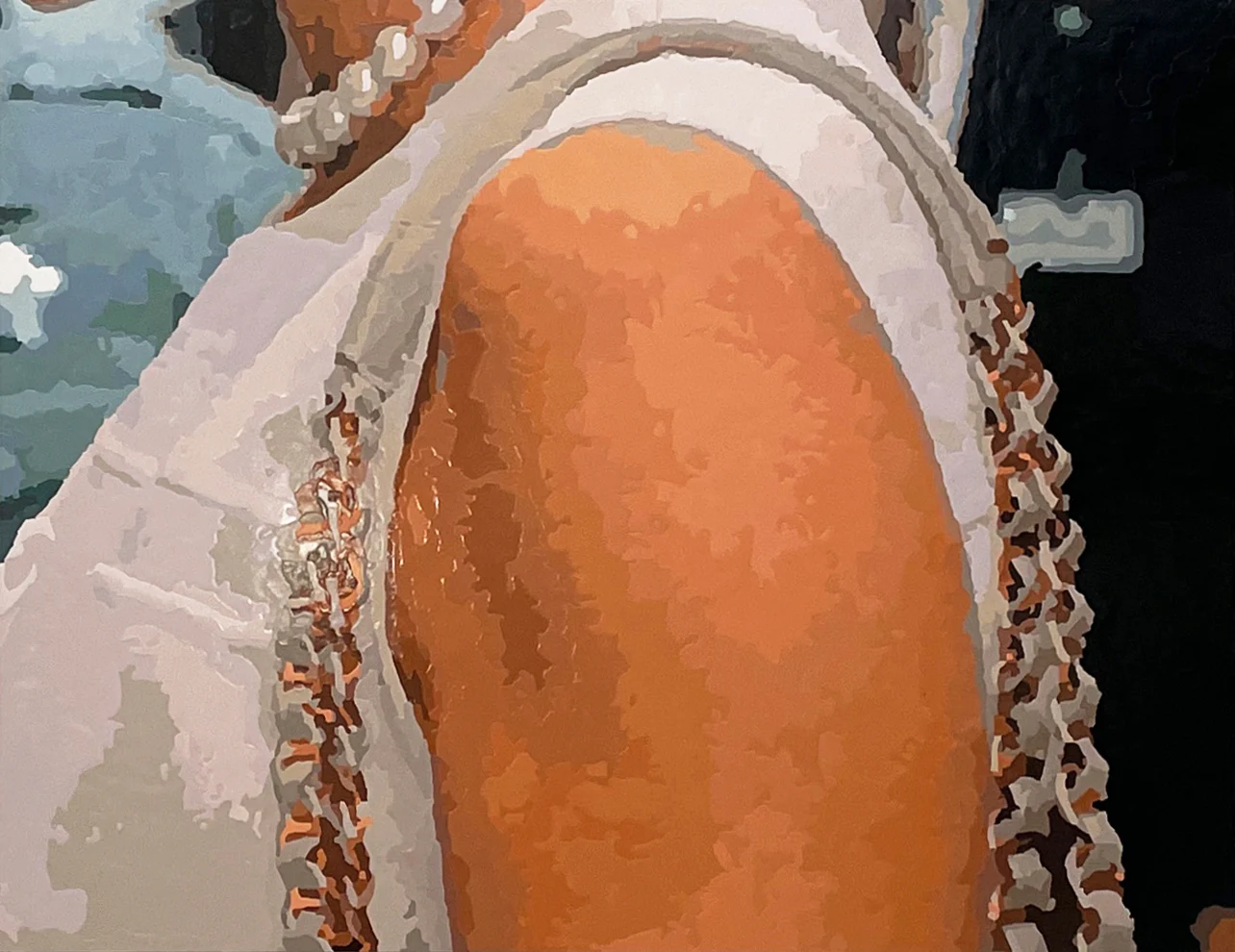
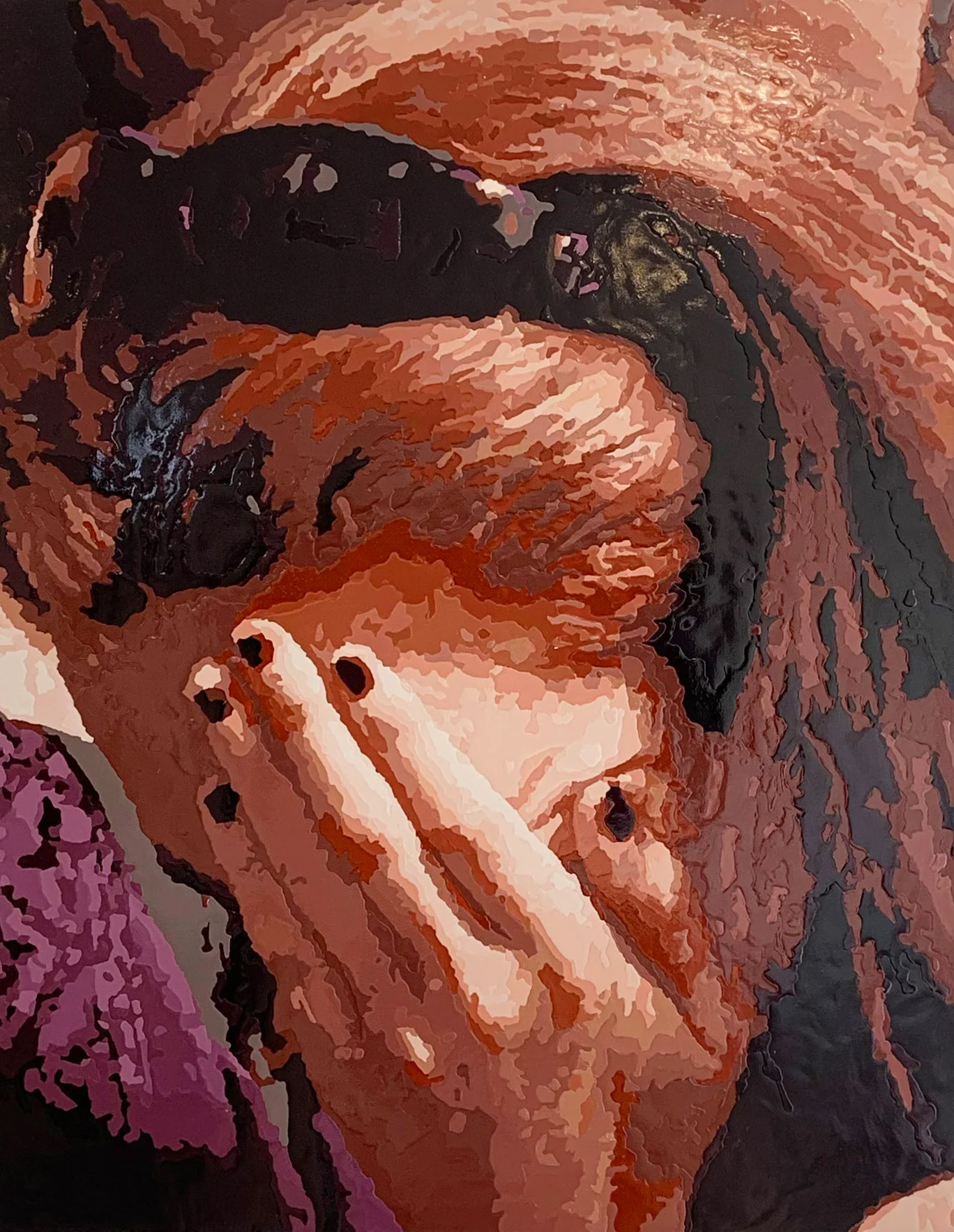
These days, when feeling inspirationally bankrupt, Caroline will delve through her own photo album archives. Inspecting google image screenshots she’s saved over the years—currently harbouring an interest in 1980s and 1990s socialites. “It would be so cringey if I made something that felt very 2022 [and] I kind of love a little bit of the tacky. I think things from the past always come back around…they’re timeless.”
